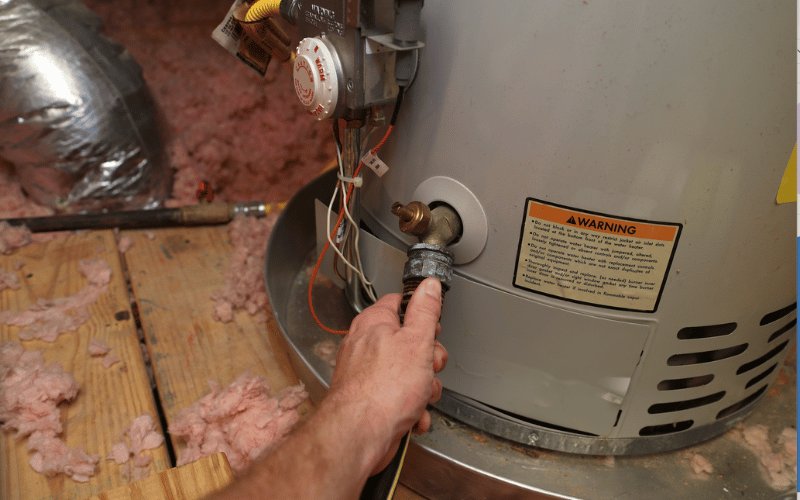Ways to Maintain Your Home's Hot Water System in Good ConditionEasy Steps to Maintaining Your Home's Hot Water System
Ways to Maintain Your Home's Hot Water System in Good ConditionEasy Steps to Maintaining Your Home's Hot Water System
Blog Article
Were you on the lookout for selective information about How to Maintain Your Water Heater & Prolong its Life?

Hot water is essential for day-to-day comfort, whether it's for a refreshing shower or cleaning meals. To ensure your hot water system runs successfully and lasts much longer, regular upkeep is key. This write-up offers sensible ideas and understandings on exactly how to maintain your home's warm water system to avoid disturbances and costly fixings.
Introduction
Maintaining your home's warm water system may seem overwhelming, yet with a couple of straightforward steps, you can ensure it operates smoothly for many years ahead. This guide covers everything from comprehending your warm water system to DIY maintenance suggestions and knowing when to contact expert aid.
Importance of Preserving Your Warm Water System
Normal upkeep not only extends the life expectancy of your warm water system yet additionally guarantees it operates effectively. Ignoring upkeep can lead to decreased efficiency, higher power costs, and also early failing of the system.
Indicators Your Hot Water System Requirements Upkeep
Recognizing when your hot water system requires focus can prevent significant issues. Watch out for indications such as irregular water temperature level, weird noises from the heater, or rusty water.
Flushing the Water Heater
Purging your hot water heater gets rid of debris accumulation, boosting performance and lengthening its life.
Monitoring and Changing Anode Rods
Anode rods prevent corrosion inside the container. Inspecting and changing them when worn is important.
Complicated Problems Requiring Professional Help
Instances consist of significant leakages, electrical problems, or if your water heater is consistently underperforming.
Routine Professional Maintenance Perks
Professional maintenance can consist of complete assessments, tune-ups, and guaranteeing compliance with safety standards.
Inspecting and Changing Temperature Settings
Adjusting the temperature level setups makes sure ideal performance and safety.
Do It Yourself Tips for Upkeep
You can do several upkeep jobs yourself to keep your warm water system in leading problem.
Looking for Leaks
Routinely evaluate pipelines and connections for leakages, as these can result in water damages and greater bills.
Recognizing Your Hot Water System
Prior to diving right into upkeep jobs, it's useful to understand the standard elements of your hot water system. Normally, this includes the hot water heater itself, pipes, anode poles, and temperature controls.
Month-to-month Maintenance Tasks
Normal regular monthly checks can help capture minor concerns prior to they intensify.
Examining Stress Alleviation Valves
Evaluating the stress relief valve guarantees it functions appropriately and avoids excessive stress buildup.
Shielding Pipelines
Protecting warm water pipes minimizes warmth loss and can save power.
When to Call an Expert
While do it yourself maintenance is beneficial, some issues call for professional experience.
Conclusion
Routine maintenance of your home's hot water system is necessary for performance, longevity, and cost financial savings. By following these suggestions and recognizing when to look for expert assistance, you can make sure a trusted supply of hot water without unexpected disruptions.
How to Maintain an Instant Hot Water Heater
Before tinkering with your hot water heater, make sure that it’s not powered on. You also have to turn off the main circuit breaker and shut off the main gas line to prevent accidents. Also turn off the water valves connected to your unit to prevent water from flowing into and out of the appliance. 2. When you’re done, you have to detach the purge valves’ caps. These look like the letter “T” and are situated on either side of the water valves. Doing so will release any pressure that has accumulated inside the valves while at the same time avoid hot water from shooting out and burning your skin. 3. When the purge valves’ caps are removed, you have to connect your hosing lines to the valves. Your unit should have come with three hoses but if it didn’t, you can purchase these things from any hardware or home repair shops. You can also get them from retail stores that sell water heating systems. Read the user’s manual and follow it to complete this task properly. When the hosing lines are connected, open the purge port’s valves. 4. You should never use harsh chemical cleaners or solutions when cleaning your unit. Make use of white vinegar instead. It should be undiluted and you’ll probably use about 2 gallons. 5. Now flush your water heater. This task should probably take about 40 minutes. We can’t give you specific directions for this because the procedure is carried out depending on the type, model and brand of your heater. With that being said, refer to the user’s manual. 6. When you’re done draining the unit, you have to turn off the purge port valves again. Remove the hosing lines that you earlier installed on each of the water valves. Put the valve caps (purge port) back in their respective places and be very careful so as not to damage the rubber discs that are found inside these caps. 7. Now that everything’s back in place, check your user’s manual again to find out how to reactivate your water heating system. 8. Once it is working, turn one of your hot water faucets on just to let air pass through the heater’s water supply pipes. Leave the tap on until water flows smoothly out of it. https://www.orrplumbing.com/blog/2014/september/how-to-maintain-an-instant-hot-water-heater/

As a reader on Tips For Maintaining Your Hot Water Heater, I figured sharing that segment was beneficial. Please take a moment to distribute this blog posting if you enjoyed reading it. Thanks for going through it.
Call Today Report this page